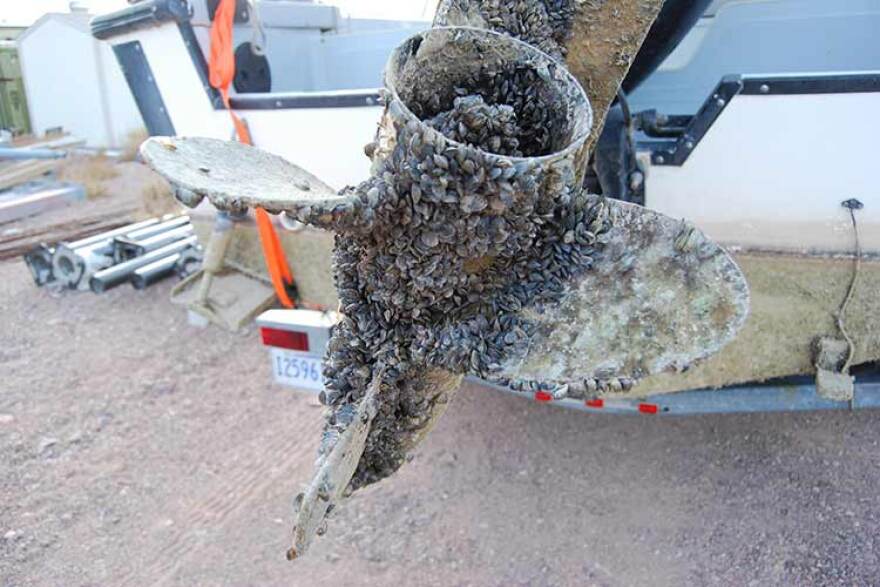A new group that aims to harmonize Montana’s response to invasive mussels, and prevent the economic and environmental damage they can cause, met for the first time Wednesday in Missoula.
The worst-case scenario of an invasive mollusk infestation is bleak. The fingernail-sized mussels can clog drinking water systems and hydropower dams, suck food out of fisheries and send swimmers to the hospital for stitches from their razor-sharp shells.
“Zebra or quagga mussels are the game changer,” says Mike Cuffe, a Republican Representative from Eureka. A bill he got through the legislature this spring aims to unify local, tribal, state, regional and federal plans to block the spread of invasive mussels into the headwaters of the Columbia River Basin, the last major river system in the country still free of the mollusks.
“This is a way to pull them together, to give them a united focus," Cuffe says. "The brainstorming that's going on in that room right now I think is huge.”
The new Upper Columbia Conservation Commission is tasked with coordinating an annual monitoring plan for lakes from Butte to Whitefish. The so-called UC3 will also create educational messaging specific to the Columbia River Basin. Its nine members, appointed by the governor, will meet at least twice a year through 2018. Its budget is $5,000 a year.
Stephanie Hester is an invasive species program manager for one state agency, the Department of Natural Resources and Conservation. She says the group wants to fill gaps in current monitoring plans.
“We've definitely identified that coordination could be improved,” Hester says. “There's a lot of folks doing sampling and monitoring around the state… But there's no document or repository that says if we're monitoring in the same areas, and potentially we could be more efficient by spreading it out.”
Tom Woolf works for another state agency, Montana Fish, Wildlife and Parks. He’s the aquatic invasive species bureau chief.
“We're doing the same thing,” Woolf says. “How can we do it better?”
Woolf says he hopes the UC3 can help agencies like his better understand what’s being done elsewhere about the mussels to create consistency.
“I think inventorying what everybody's doing, looking at the protocols everybody uses, trying to get a baseline, so everybody’s using the same base for training and the same expectations for inspections,” Woolf says. “Some tribes have additional requirements, so learning what those requirements are and being able to communicate that for boaters as they go through state stations.”
Half of the UC3 members have yet to be appointed. Members will represent private landowners and industry, hydropower utilities and electric coops, conservation districts and recreation organizations, the Confederated Salish and Kootenai Tribes and the state legislature. Their next meeting is scheduled for January.
The UC3 is ramping up at the same time that another group that’s been tackling the mussels is facing big cuts to its state funding. The state legislature previously tasked the Flathead Basin Commission with overseeing a new invasive mussels pilot program. Both programs were created by Representative Cuffe’s bill. But the Flathead Basin Commission’s funding is in jeopardy as the governor and state lawmakers try to balance the state budget.






